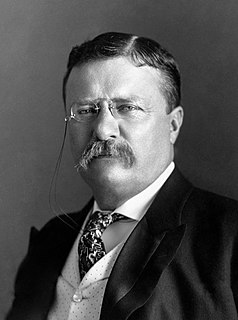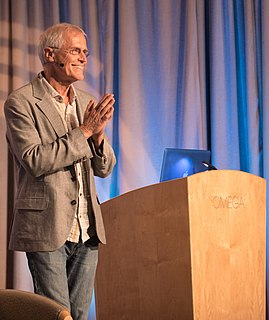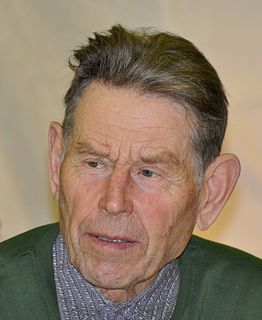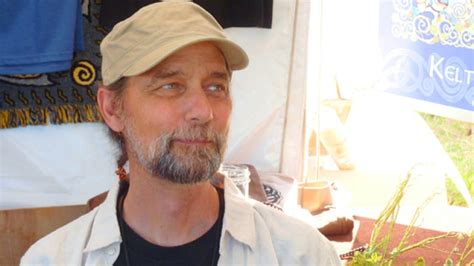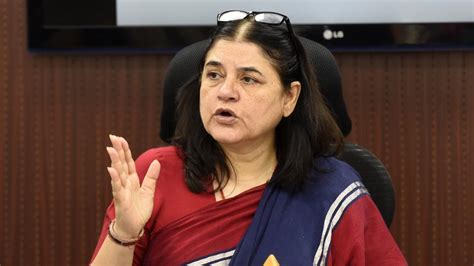A Quote by Frances Ford Seymour
Forests and trees make significant direct contributions to the nutrition of poor households ... [as] rural communities in Central Africa obtained a critical portion of protein and fat in their diets through hunting wildlife from in and around forests. The five to six million tonnes of bushmeat eaten yearly in the Congo Basin is roughly equal to the total amount of beef produced annually in Brazil - without the accompanying need to clear huge swathes of forest for cattle.
Quote Topics
Africa
Amount
Around
Beef
Brazil
Cattle
Central
Clear
Communities
Congo
Contributions
Critical
Diets
Direct
Eaten
Equal
Fat
Five
Forest
Forests
Forests And Trees
Households
Huge
Hunting
Make
Million
Need
Nutrition
Obtained
Poor
Portion
Produced
Protein
Roughly
Rural
Rural Communities
Significant
Six
Through
Total
Trees
Wildlife
Without
Related Quotes
One of the reasons why I say we all need to work together to save the Congo forest, because if we don't save the Congo forest, the Amazon forest and the southeast Asia forest, if those forests release the carbon they are trapping at the moment, much of what you will be doing in the North will be negated by the amount of carbon released into the atmosphere.
I want to do the right things - I want to plant trees, I want to make sure that the indigenous forests are protected because I know, whatever happens, these are the forests that contain biodiversity, these are the forests that help us retain water when it rains and keep our rivers flowing, these are the forests that many future generations will need.
Vegetarians always ask about getting enough protein. But I don't know any nutrition expert (who) can plan a diet of natural foods resulting in a protein deficiency, so long as you're not deficient in calories. You need only 5 or 6 percent of total calories in protein... and it is pratically impossible to get below 9 percent in ordinary diets.
A people without children would face a hopeless future; a country without trees is almost as helpless; forests which are so used that they cannot renew themselves will soon vanish, and with them all their benefits. A true forest is not merely a storehouse full of wood, but, as it were, a factory of wood and at the same time a reservoir of water. When you help to preserve our forests or plant new ones you are acting the part of good citizens.
For the rains and the rivers you need forests and you need to make sure these your forests are all protected, that there is no logging, that there is no charcoal burning and all the activities that destroy the forest. All this really needs to be done so that you can be able to grow good coffee, so that you can have an income, so that you can send your children to school, so that you can buy medicine, so that you can take them to hospitals, so that you can care for the women, especially mothers.
When cattle ranchers clear rain forests to raise beef to sell to fast-food chains that make hamburgers to sell to Americans, who have the highest rate of heart disease in the world (and spend the most money per GNP on health care), we can say easily that business is no longer developing the world. We have become its predator.
Virtually, Finnish woods are stripped so bare, so sold out and first and foremost, so long way off from genuine diverse natural forest, that the resources of language will not permit excessive words. Finnish forest economy has been compared to the ravaging of rain forests. Nevertheless, the noteworthy difference is that there is a half or two thirds left from rain forests, but from Finnish forests there is left - excluding arctic Lapland - 0,6 per cent.
My sense is that the most under-appreciated-and perhaps most under-researched-linkages between forests and food security are the roles that forest-based ecosystem services play in underpinning sustainable agricultural production. Forests regulate hydrological services including the quantity, quality, and timing of water available for irrigation. Forest-based bats and bees pollinate crops. Forests mitigate impacts of climate change and extreme weather events at the landscape scale.
There were two forests for every one you entered. There was the one you walked in, the physical echo, and then there was the one that was connected to all the other forests, with no consideration of distance, or time. The forest primeval, remembered through the collective memory of every tree in the same way that people remembered myth- through the collective subconscious that Jung mapped, the shared mythic resonance that lay buried in every human mind. Legend and myth, all tangled in an alphabet of trees remembered, not always with understanding, but with wonder. With awe.
Cows provide approx 100 million tonnes of dry dung a year costing Rs 5000 crores which saves 50 million tonnes of firewood which again means that many trees saved and more environmental damage prevented. It is calculated that if these 73 million animals were to be replaced, we would need 7.3 million tractors at the cost of 2.5 lac each which would amount to an investment of 180,000 crores. In addition 2 crore, 37 lakh and 50 thousand tonnes of diesel which would mean another 57,000 crore rupees. This is how much we owe these animals, and this is what we stand to lose by killing them.
Forests are breaking out all over America. New England has more forests since the Civil War. In 1880, New York State was only 25 percent forested. Today it is more than 66 percent. In 1850, Vermont was only 35 percent forested. Now it's 76 percent forested and rising. In the south, more land is covered by forest than at any time in the last century. In 1936 a study found that 80 percent of piedmont Georgia was without trees. Today nearly 70 percent of the state is forested. In the last decade alone, America has added more than 10 million acres of forestland.





